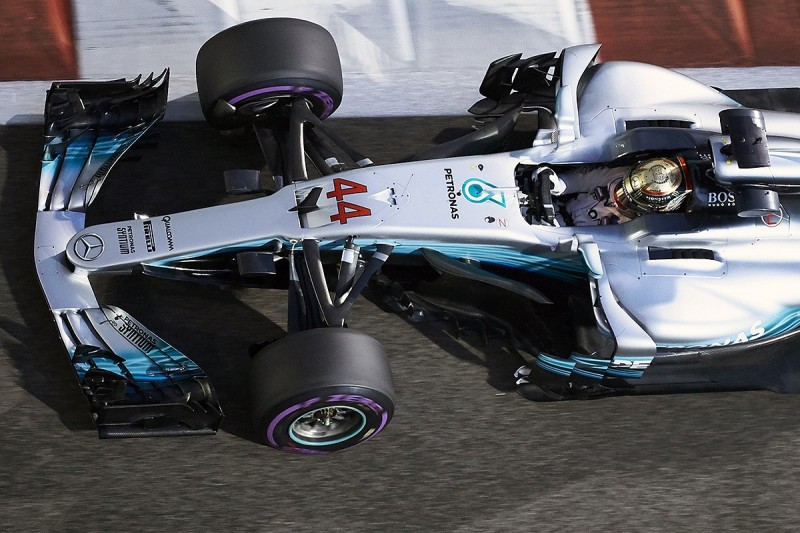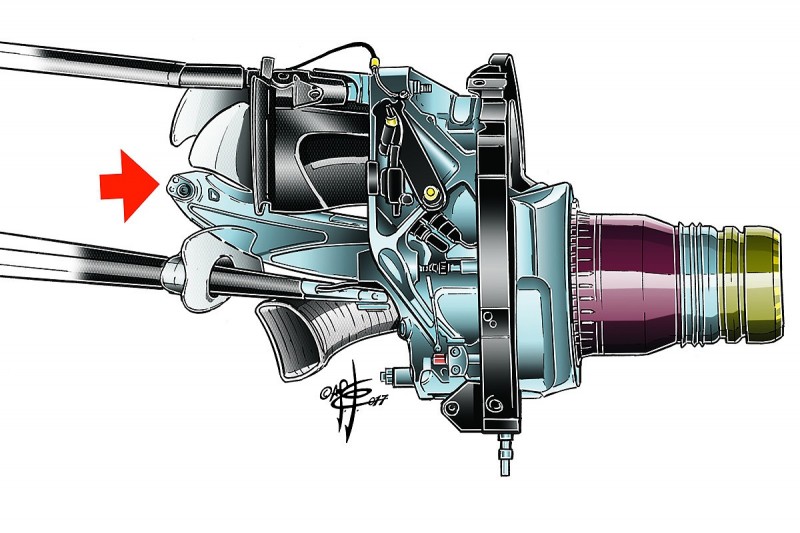Gary Anderson's verdict on new F1 suspension ruling
It's interesting to see the FIA is taking a stand on what constitutes an aerodynamic advantage by tackling the lowering of the front ride height with steering lock in Formula 1

The FIA is using a 5mm change from lock to lock as the threshold for legality, but this is difficult to police.
With the steering straight ahead, you can slide a block underneath the car that has 5mm clearance and then turn the steering onto full lock. If the car touches the block when you do that, then it would not be acceptable and if it cleared it then it would be OK.
The big question is why are the teams trying to achieve this - and if they can do it, why should it be illegal?
A Formula 1 car will have understeer in the slow and medium speed corners, which reduces as the speed increases and aerodynamics become more dominant.
Also, the faster you go, the more effect the front wing angles will have on the balance of the car.
Drivers normally like a car with a little touch of understeer at high-speed, which gives them confidence that they know what the car is going to do and makes available that little cushion of feel before the car snaps into oversteer.
If you have this sort of balance, then as you go slower the more understeer you have.
The front ride height of an F1 car is critical. A normal static ride height would be around 20-25mm ground clearance and half-a-millimetre can make a significant difference to both the overall amount of downforce and the balance of the car.

If someone was clever enough to lower the front ride height with steering lock, then it will increase the overall downforce mid-corner and it will move the centre of pressure (the point where all the aerodynamic loads push down on the car) forward - especially in medium and slow speed corners where the steering lock is increasing.
As you add more steering lock, the front will also get lower again and improve front grip.
So how is this achieved? We used to look at the aero data in five different steering lock positions, listed below with the steering angle:
1) Straight ahead, when the priority would be reduced drag for higher top speeds.
2) Three degrees, which would be a fast corner. For this position, you need the centre of pressure to be stable - so the same as straight ahead.
3) Six degrees, which is a medium-speed corner. For this position you want the centre of pressure to start to move forward.
4) Nine degrees, which is a slow corner. For this position, you want the centre of pressure to keep moving forward.
5) 12 degrees, which is basically a hairpin. Again, the centre of pressure needs to keep moving forward.

Between two and five, you are looking at a centre of pressure shift of something like 1.5%. If you can achieve this, there will be two benefits: firstly, the car will have less understeer as the corners get slower, and secondly, as you reduce the steering lock on corner exit the car gains rear grip, which helps the traction coming off the corner.
If, for any reason, the aerodynamic characteristics are the opposite way around the car will be a right pig to get a balance for that gives the driver any confidence.
In the old days, the front pushrod was mounted off the lower wishbone, so was fairly benign to changes of steering lock.
Now, the front pushrod is mounted off the upright, so depending on its pickup location you can play with the car's ride height by varying steering lock.
This drawing of the Red Bull front upright assembly shows just how far inboard the pushrod pickup actually is.

So depending on its location front to rear, you can alter the amount the pushrod effectively lengthens or shortens as the upright goes through its arc with steering lock varying. The more lock, the lower the car will get.
The only negative could be that it can alter the steering weight through the varying steering locks and drivers like Kimi Raikkonen don't like this as they use the weight of the steering to judge the balance of the car.
This probably isn't something the FIA should be banning, but some team has probably called foul play and caused this reaction even though it is the same for everyone.
As long as any change in ride height is achieved mechanically, I believe it is completely legal. Yes, it will induce an aerodynamic change, but so does any ride height change.
I also believe that the acceptable 5mm is a lot when it comes to centre of pressure shift, so it is just another one of these things that the commentators will rabbit on about and will confuse the viewers even more.
Be part of the Autosport community
Join the conversationShare Or Save This Story
Subscribe and access Autosport.com with your ad-blocker.
From Formula 1 to MotoGP we report straight from the paddock because we love our sport, just like you. In order to keep delivering our expert journalism, our website uses advertising. Still, we want to give you the opportunity to enjoy an ad-free and tracker-free website and to continue using your adblocker.















Top Comments